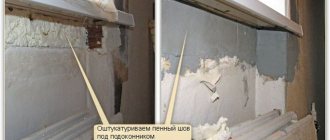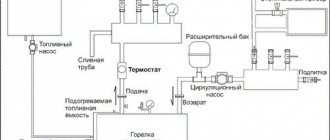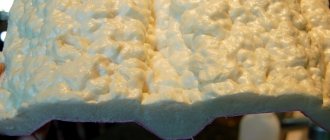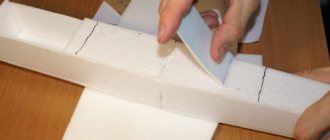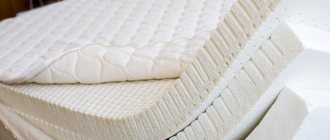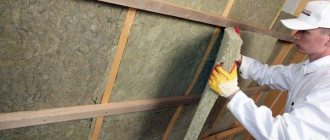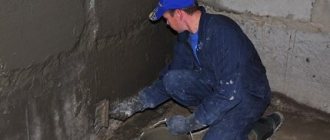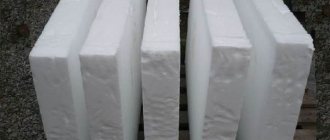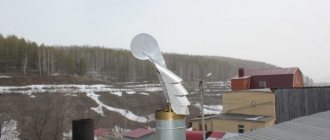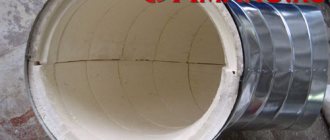Even at the stage of planning and construction of a building, the basis for its safety is laid. The quality of a building is determined primarily by its fire protection. This is especially important when it comes to buildings where large crowds of people are planned.
Typically these are shopping and business centers, production, warehouse or administrative premises. Fire protection is also necessary in rooms where high-power heating elements are installed (baths, saunas) or open fire can be used (cafes, restaurants, clubs, discos).
To protect against the spread of fire, minimize the consequences of fires and the risk of their occurrence, a variety of methods are used. Among them are the application of fire-retardant paint or coating to finished structures, the use of fire-resistant building and finishing materials. Auxiliary materials may also have fire-resistant properties. For example, fire-resistant polyurethane foam. Its use allows you to isolate the flame, prevent its spread, and also protect the premises from toxic combustion products.
This material appeared relatively recently. Externally and during application, it is almost completely identical to conventional polyurethane foam: it does not flow down vertical surfaces, expands several times after application, and easily penetrates even into hard-to-reach cavities. Fireproof polyurethane foam adheres perfectly to any surface, be it glass, concrete, wood, brick, metal or plastic. After hardening, it becomes rigid, due to which it is used to fix window and door blocks, frames, boxes, as well as to protect installation holes around wiring, the space between pipes and other structural elements from fire.
Foam allows not only to securely fix various structures, but also to ensure their tight fit, which protects against the penetration of gases, sounds and moisture. After polymerization (hardening), fire-resistant polyurethane foam is able to resist the effects of open fire and at the same time, throughout the entire period of operation, it is not susceptible to moisture and often accompanying mold or mildew. Due to its insulating properties, it can be used as part of insulating structures.
Any polyurethane foam, including fire-resistant foam, is easy to apply, and after hardening, its excess can be easily removed with a knife.
Compared to conventional polyurethane foam, fire-resistant foam has a greater margin of safety.
Compound
The composition of fire-resistant polyurethane foam is almost identical to regular foam:
- base - liquid polyurethane
- catalysts (enable the use of foam at sub-zero temperatures)
- foaming agents (determine the rate of hardening and level of porosity)
- stabilizers (help with uniform distribution on the surface)
- gas (foams the material after application)
- Fire retardants and graphite determine the fire-resistant qualities of the foam and its color. It is usually red or pink. By this feature you can quickly distinguish ordinary foam from fire-resistant foam.
Application
Fire-resistant polyurethane foam is used primarily where compliance with fire safety standards regulated by regulatory documents is required. Typically this is a professional application in the construction of buildings intended for administrative, industrial and public needs. It can also be used in private construction and renovation work.
Foam with fire-fighting properties is used to fill seams and cracks in fire partitions designed to protect rooms from smoke and fire, in window and door frames. Foam is used to fill hollow spaces inside walls and ceilings, around switches, sockets and connectors, or used as a sealant when installing chimneys, fireplaces and stoves, heating equipment, air conditioning systems and ventilation openings.
Heat-resistant chimney foam
It is much more convenient to repair brick stoves and fireplaces using modern construction chemicals. Moreover, various sealing compounds are used during the construction or installation of chimneys.
The essence of the problem: from a wide range of products, the homeowner needs to choose a heat-resistant sealant that can withstand extreme operating conditions inside the stove masonry, chimney pipe, and so on.
Our publication will help you make the right choice.
Let's outline the scope of application
Construction supermarkets sell many sealing pastes used in heating, plumbing and sewerage systems. It must be understood that ordinary food and sanitary compounds do not belong to the high-temperature category, although they are used for the installation of some elements of chimney pipes.
Deep cracks can be covered with mortar, but it is better to fill them with sealing material
Water- and heat-resistant sealants are used for the manufacture, laying and repair of various furnaces for the following purposes:
- Sealing cracks and holes in the walls of a combustion chamber built of brick or welded metal.
- Sealing chimney pipes during repair or installation.
- Exterior finishing of brick fireplaces and stoves.
- Bonding heat-resistant gaskets (asbestos and graphite-asbestos cords) to metal fittings - doors, valves, iron ovens and cast iron stoves.
- Waterproofing of roof junctions with chimneys made of metal and brick.
Note. Some repair compounds are even used to restore refractory masonry made of fireclay bricks. One condition: the maximum temperature in the firebox is 1500 °C.
A crack in the stove masonry or welded joint of the steel parts of the firebox causes smoke in the heated room and the formation of soot in the defect area. The traditional way to eliminate it is to move the stove or cover the through gap with clay. Modern high-temperature sealant allows you to solve the problem much faster and more efficiently.
A cracked brick chimney has to be rebuilt
The suction of street air into the chimney pipe is a very unpleasant phenomenon.
More condensation and soot fall on the walls, which can ignite at any time due to the high temperature of the flue gases. Hence the need arises to seal the connections of the chimney pipe elements.
We will describe in detail about other methods of use as we review specific formulations.
Types of high temperature sealants
Depending on the nature of the defect and the location of sealing, compositions for furnaces are divided into the following types:
- silicate heat-resistant sealants that can withstand temperatures up to +1500 °C without destruction;
- silicone-based pastes with a maximum temperature threshold of +250 °C (short-term - up to 350 °C);
- special glues and mastics designed for heating up to 1000 °C;
- adhesive mixtures for external cladding of heating stoves and fireplaces with tiles, heat resistance limit – 800 °C.
Important point. Do not confuse oven sealants with oil-resistant silicone pastes used to seal joints in automobile engines. Red motor compounds are sold in tubes and have a strong vinegar smell. They can be used to seal threaded connections of water heating systems.
Oven sealants also do not include fire-resistant paints or liquid insulation. The purpose of materials in this category is to protect the surfaces of building structures from fire and destruction in a fire. The maximum fire resistance limit of such coatings is 2 hours when in contact with an open flame.
Red car seals are not considered heat-resistant and are not used by stove makers
So that you can choose the appropriate type of sealing paste, we suggest looking at each type using specific examples.
Heat-resistant pastes
Fire-resistant sealant of this type is a black viscous substance made on the basis of sodium silicate with the following characteristics:
- operating temperature range – from minus 40 to +1500 °C;
- release form - plastic tubes - cartridges inserted into a mounting gun;
- hardens within 10-15 minutes;
- the hardened mass is inelastic and can deform by a maximum of 7% without destruction;
- applied at positive air temperatures - from 1 to 40 ° C (more precisely indicated on the tube of a particular product); The black color of the heat-resistant material is visible from the bottom end of the tube
- adheres well to rough and smooth surfaces - stainless steel, galvanized steel, ferrous metal, brick;
- price for a 310 ml tube - 6-9 USD. e. depending on the manufacturer.
Reference. Judging by reviews from homeowners, the most famous heat-resistant sealants are Penosil 1500 Sealant (country of origin: Estonia) and Soudal (Belgium). It is not difficult to find cheaper analogues on sale.
Heat-resistant paste gives excellent results when sealing joints of fixed surfaces with approximately the same expansion coefficient:
- cracks in the stove and fireplace masonry;
- through cracks in chimneys made of brick or metal, where outside air is sucked in;
- leaky welds on steel boilers;
- cracked sections of cast iron heat generators (does not always help).
Also, black paste-like sealants are used as a sealant between the masonry of a stove or fireplace and the fittings - doors, views, oven, and so on. A prerequisite is the laying of a damper tape (for example, an asbestos cord), which compensates for the thermal expansion of the metal. Otherwise, the frozen mass will crumble.
The fallen brick can be placed on heat-resistant paste. Complete solidification of the mass occurs after heating the oven.
How to use heat-resistant sealant correctly:
- The minimum width of a crack or gap between elements is 5 mm. Thick paste will not fit into a narrower gap.
- Elimination of defects in a stove or boiler firebox is carried out “cold”. Fistulas in the chimney can be repaired “hotly”.
- Surfaces are cleaned of dust and degreased as far as work conditions allow.
- The substance is applied with a construction gun.
An example of applying Soudal to an opening before installing the door
When using some compounds (for example, Soudal), the manufacturer recommends lightly moistening the surfaces with water. Wear rubber gloves - the sealant has high adhesion to various materials and is difficult to wash off.
Silicone seals
One-component heat-resistant silicone with various additives can withstand heating up to 250-285 °C, short-term - no more than 315 °C. Common brands are Penosil, Tytan (Titan), Germent. In the stove industry, sealant is used for a chimney whose surface is not too hot, for example, connected to a gas boiler.
For reference. The temperature of the chimney pipe of conventional gas boilers rarely reaches 120 °C, and that of condensing boilers - 100 °C. The flue of a fireplace, brick stove or solid fuel boiler heats up to an average of 150-200 °C, a sauna heater - up to 300 °C. This refers to the inner walls of the channel, the outer walls are much colder.
A semi-liquid silicone mass of red (sometimes blue) color, after hardening, forms an elastic barrier that can stretch and contract by 100% (2 times). The characteristics of heat-resistant silicone-based sealants look like this:
- operating temperature – from minus 40 to plus 250 °C;
- packaging – 310 ml pistol cartridges;
- hardening time – 20 minutes;
- adhesion to any smooth surfaces - glass, metal, ceramics and the like;
- applied “cold” at ambient temperature plus 5-40 degrees;
- UV resistant;
- joint width and depth – 6 mm or more;
- the cost of packaging 310 ml is from 3 to 7 USD. e.
In addition to the external sealing of cracks in brick chimneys, silicone paste can be used for external sealing of sandwich chimneys during the installation process. Sealant cannot be used in very hot furnaces of boilers and fireplaces.
Important advice. Silicone is applied directly to the joint of the sandwich modules when the chimney is not planned to be disassembled in the future. Although the mass is elastic, it will not be possible to separate the sections after processing - you will have to cut them with a grinder. It is better to apply the composition after assembly directly to the joint - where the end of the “mother” rests against the side of the “father”.
Adhesive facing compositions
When installing stove doors, dampers and ovens inside the brickwork, a fire-resistant sealant is used - graphite-asbestos cord. To prevent it from moving or falling out during installation, we suggest fixing it with a special glue shown in the photo. The substance “holds” a temperature of up to 1100 ° C and sets within 10-20 minutes.
If the masonry of a stove or fireplace is covered with small cracks affecting the bricks, it is unrealistic to seal them with heat-resistant sealant - the defects are too narrow and deep. In this case, one of the heat-resistant facing compositions will help:
- one-component tile adhesive with the addition of fire-resistant mineral fillers, temperature threshold – 800 °C;
- special mastics for gluing tiles and stone with a heat resistance limit of +1000 °C;
- adhesive mixtures based on chamotte and kaolin dust that can withstand heating up to +400 °C.
The point of using adhesives and mastics is as follows: all small cracks are closed by processing and finishing the walls of the oven with tiles or tiles. After repair, the fireplace is not only sealed, but also acquires a wonderful appearance.
Important! Before covering the stove, it is necessary to eliminate the cause of the cracks, otherwise the new design will quickly deteriorate or fall off. Adhesive mixtures and compositions do not have mobility and elasticity.
The technology for applying mastics, the thickness of the layer and the hardening time of the adhesive sealant are necessarily described in the instructions on the packaging. Surface preparation is done in approximately the same way - clay, paint and dust are removed, masonry joints are cleared. Then priming is done with a deep-penetrating compound (of the same brand). Fireclay adhesive mixtures are sold in bags, mastics are sold in plastic buckets of 5-15 kg.
Source: https://evroterm32.com/zharostoykaya-pena-dlya-dymohoda/
Fire resistance class
The time during which fire-resistant polyurethane foam can resist an open flame depends on its fire resistance class. It is indicated by special markings on the packaging:
- IN 1
- AT 2
- AT 3
The most resistant class to high temperatures and open flame is B1. Foam with this marking does not support combustion for the longest period of the rest. This material is used for the installation of stoves, fireplaces and other objects that create an increased fire hazard.
B2 is a medium fire-resistant foam that melts under high temperatures and releases a small amount of toxins. It goes out on its own when the open flame is removed. Suitable for sealing heat, water and sewer lines.
The B3 marking indicates flammable polyurethane foam; it is better to avoid using it for fire protection purposes.
Fire resistance coefficient
In addition to the class, among the characteristics of fire-resistant polyurethane foam, the fire resistance coefficient is very important. It indicates the time during which the material is able to resist open fire at a temperature of 1000°C. Indicated by the numbers 30, 60, 90, 120 and 150, corresponding to the number of minutes during which the foam will not lose its shape and characteristics when exposed to an open flame. Foam with a maximum level of flame resistance and marking 150 is used to insulate chimneys that are constantly exposed to high temperatures.
Most types of fire-resistant foam are able to retain all their properties even during operation at extreme temperatures (from -60 to +100°C).
Performance characteristics
It is important to understand that fire resistance does not mean the complete impossibility of fire. The sealant resists fire for a certain time, but will catch fire if exposed for a long time. The resistance period is different for all manufacturers, which affects the performance characteristics of the compositions.
Additional properties:
- In the high temperature range from -60 to +100 degrees, the beneficial properties of polyurethane foam are fully preserved.
- Absolutely inert to moisture, fungus and mold formation, which are not retained by the hardened sealant.
- It has increased strength characteristics compared to conventional foam.
- When heated, it does not melt, does not drip, and has pronounced self-extinguishing properties.
The only drawback is the inability to withstand sunlight, since ultraviolet rays destroy the sealant and its properties. To protect the insulation, the foam is treated with cement mortar or putty, and in some cases painted.
Fire-resistant foam is presented on the market in several types, which differ in component composition, performance properties and time of resistance to an open flame. Fire-resistant polyurethane foam is classified depending on its purpose and description of its properties and fire resistance characteristics. Manufacturers produce sealants using their own technologies, adding various components to the compositions in unequal proportions, therefore fire-resistant sealants have different properties:
- According to seasonality – all-season and winter.
- In terms of composition - one-component and two-component.
- Depending on the area of use, the sealant can be either household or professional construction.
It is necessary to follow the manufacturer's recommendations for applying assembly joints and work with sealant in the specified temperature range. The type of composition is selected depending on the purpose of using the insulation for passages of various traffic areas. The fire hazard category of buildings, equipment, and communication channels is taken into account.
Types of fire-resistant polyurethane foam
Fire-resistant foam is classified according to various criteria: temperature conditions during application and during operation, composition, fire resistance class, consumption, scope of application and others.
Depending on the season, polyurethane foam is divided into winter and all-season. Winter foam is applied to the surface at temperatures down to -18 degrees without loss of fire-resistant and other qualities. All-season foam is applied only in summer or spring/autumn. The minimum air temperature threshold for it is not lower than -10 degrees. However, the optimal surface temperature for applying polyurethane foam is +5-30 degrees, and the material itself must have a temperature of no less than +10 and no more than +30 degrees Celsius.
When using foam in cold weather, keep in mind that it will expand less when applied, so that in the end its volume after hardening will be less than after use at higher temperatures.
Based on their composition, the foam is divided into one-component and two-component. The first hardens at normal air humidity. Before applying it, it is recommended to moisten the surfaces, as this increases its adhesive properties. It is even better if the surface is thoroughly cleaned and primed.
The second type of foam is supplemented with substances that make it harden faster. For low temperatures, only two-component foam can be used.
How much foam do you need to complete the job?
The recommended seam thickness when applying polyurethane foam is 5-10 cm.
Typically, the manufacturer indicates the approximate level of foam consumption per unit area on the packaging. In fact, the consumption depends on many conditions: the width of the surface being treated, the thickness of the seam, the depth of penetration, uniformity of application, ambient temperature, foam composition, manufacturer and professionalism of the craftsman. But in any case, one more cylinder will never be truly superfluous.
Advantages and disadvantages
The main advantage of fire-resistant polyurethane foam is that it does not ignite even under the influence of open fire for the period specified in the marking. After its expiration, the foam will still catch fire, but when the exposure to the fire ceases, it will go out on its own. At the same time, it will not melt and flow or drip due to high temperatures, creating additional danger.
The disadvantages of polyurethane foam with fire-retardant properties include exposure to ultraviolet radiation during operation. If the mounting seams on which the foam is applied are open and exposed to sunlight, then over time it will lose its fire-resistant properties and may simply collapse. To prevent such a situation, seams with hardened foam are protected with putty, covered with a layer of cement or painted.
Fire-resistant foam: instructions for use
Information on how to use polyurethane foam is located on the cylinders. On the Internet you can find a lot of useful tips with visual lessons that demonstrate the use of foam in the process of performing various installation works. The main stages of using the substance can be summarized in several points:
- The container must be heated in hot water and shaken well. Thanks to this, the gas and liquid components mix, and the foam yield is maximized.
- Next, the balloon is placed on a tube or mounted on a gun.
- Before applying foam, the surface is cleaned of dust and dirt and moistened with water.
Before starting work, it is necessary to calculate the dosage of foam output from the container
- Apply foam to the surface. To do this, it is necessary to calculate the dosage of foam coming out of the container. A pistol will help with this. The bottle should be kept with the valve down while applying the substance.
- Foam drying stage. As a rule, this takes 6–8 hours. The duration of the process depends on the volume of the substance and can reach up to 12 hours.
- After the foam has dried, cut off the excess with a sharp knife or file.
Polyurethane foam is a material that is sensitive to ultraviolet radiation and deteriorates under its influence. Therefore, polyurethane sealant used outdoors must be coated with a special solution after drying.
How to clean polyurethane foam: removing residue from clothes, hands and tools
After using polyurethane sealant, the question arises: how to clean the polyurethane foam? It turns out that there are many answers and useful recommendations that depend on your specific situation.
You can remove polyurethane foam from your hands with a napkin moistened with sunflower oil.
Helpful advice! To avoid the dilemma of how to wipe foam from your hands, it is important to prevent the substance from getting on your body. To do this, you need to work carefully, using special clothing and protective gloves.
Sometimes, even when using gloves, the sealant gets on the skin, then you have to decide how to wash the foam from your hands. A special solvent, which is used to wash a professional pistol, will help get rid of the substance.
In solving the problem of how to wipe foam from the skin, improvised means will help. You can wash off the substance with kerosene or remove it with a napkin soaked in heated sunflower oil. But to do this you need to be patient and leave the product on the skin for about half an hour. Regular table salt will also help if you gently rub the contaminated areas with it, as well as the Dimexide solution, but it is better to use it to remove polyurethane foam from clothes. As a solvent, this medicine will help quickly get rid of contamination.
If the sealant has dried, you will not have to wash it, but clean the foam from your clothes. How to do it? First, the building material will have to be removed manually. Then you can use the above solutions.
To remove traces of foam from clothing, you can use a gun cleaning solvent.
Before wiping the foam from a door or other surface, it is better to wait until it hardens, and only then carefully remove the dried material with a thin stationery knife.
